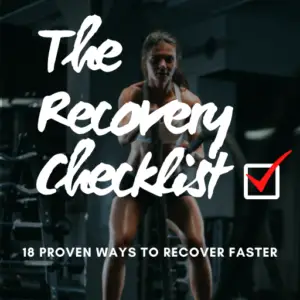Do you love running? Or hate it?

Many consider running the best way to burn calories and stay fit. Sometimes the only way!
Others think it’s a dangerous activity that people with knee pain and back pain should avoid at all costs. Patients tell me, “My doctor said I should never run again.”
So who’s right?
Let’s examine the pros and cons of running to see the whole picture.
The Pros of Running
Running has many upsides. These are 3 big ones:
1) Cardiovascular Fitness
Nothing elevates the heart rate quite like running…with the possible exception of watching Cops. Running is an amazing way to keep your heart and lungs healthy. Plus, it burns tons of calories and accelerates weight loss for those looking to drop a few pounds.

2) Running is Functional
The ability to run translates to everyday life. Whether you’re playing with the kids, tracking down a run-away dog, or chasing down the ice cream truck, being able to run makes life better.
3) Running Requires Minimal Equipment
Sure, you can go all out for the customized shoes, sleek running outfit, and newest high-tech running watch. But all you really need to run is a decent pair of shoes.
The fresh air, sweat, heavy breathing and blisters are free!
Comfortable footwear is key. Comfy shoes reduce the risk of plantar fasciitis, leg injuries and foot pain. I ran a 10k after months of infrequent, methodical training. I trained and ran the 6.2 miles in $36 walking shoes. And I felt great.
For the runners serious about comfort and fashion, On Cloud running shoes and Hoka shoes are popular choices among my clients.
The Cons of Running
Despite its benefits, running has a few drawbacks.
1) Runners Have High Injury Rates
Up to 75% of runners get injured every year.
75%!
Running with bad technique and poor programming is a recipe for injury.
Fortunately, smart programming and solid running technique reduce injuries. Here’s the secret:
Injury-free runners land softly when they run.
Most runners over-stride, land too far in front of them, and hit the ground too hard. To land softer, increase your cadence. Aim for 170-180 steps per minute. A faster cadence will diminish forces through the legs on each stride.
2) Running is High-Impact
Even with pristine technique, running is a high-impact activity. The knees handle up to 8x body weight with each step (Miller 2014). For a 150 lb person, that’s 1,200 pounds of force!

High-impact forces can help or harm to the body. On the positive side, these forces make bones, muscles and spinal discs stronger. But on the negative side, high-impact forces can cause lower body muscle and joint pain.
If high-impact activities like running and jumping cause you pain, opt for one of these 7 low-impact exercises instead.
3) Running Aggravates Old Injuries
The repetitive, high impact forces of running can aggravate pre-existing injuries. Running can flare up sciatic nerve pain. And old ankle injuries start to feel like new injuries again.
Running can also exacerbate knee muscle and tendon pain. Plus, it’s hard on the lower leg muscles, especially for runners with a dramatic heel strike or forefoot landing pattern. Running on asphalt is even linked to heel pain.
The Verdict
Running is a great way to relieve stress, lose weight, and stay healthy. Plus, it’s low-cost and improves translates to better function in daily life. However, it’s not for everyone.

Running entails repetitive, high-impact forces that can cause injuries or flare up old problems. Exercise caution if running hasn’t agreed with your body in the past. Try one of these alternatives instead.
Readers: Do you love running or hate it? What’s your biggest running “pro” or “con”? Share your thoughts in the comments.
For more evidence-based insights you won’t find anywhere else, join the free, fast-growing Facts & Physio Newsletter. Plus, get The Recovery Checklist when you sign up.

